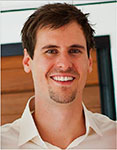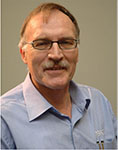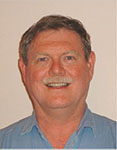Bioremediation and immobilisation of oily sands containing naturally occurring radioactive material (NORM)
Ruan de Witt A , John Lambert A and Hamilton’s David AExxonMobil
The APPEA Journal 52(1) 311-316 https://doi.org/10.1071/AJ11023
Published: 2012
Abstract
The precipitation of radioactive substances from produced formation water during the production of oil and gas causes the accumulation of naturally occurring radioactive materials (NORM) in processing equipment. The resulting oily sandy waste stream has a level of radioactivity and contains volatile organic compounds, heavy metals and other petroleum hydrocarbon based contamination. This poses a potential health, safety and environmental risk. Treatment mechanisms for such waste must therefore address both radioactive and hydrocarbon contamination.
This paper focuses primarily on the hydrocarbon contamination, and considers bioremediation and immobilisation as treatment mechanisms. Bioremediation of the oily fraction of this waste is examined using four different types of bacteria: Aspergillus niger, Acinetobacter calcosleticus, Pseudomonas aerogenousa and Rhodococcus ruber as possible additives.
The use of naturally acclimated organisms generated in bioremediation of oily industrial residues is also examined. Immobilisation treatment with the purpose of capturing the oily fraction of the waste was also evaluated by limiting bioavailability though micro- and macro-encapsulation of the organic components of the waste. Leachability subsequent to immobilisation was assessed to determine the suitability of the treatment for long-term encapsulation and containment.
The results in this paper demonstrated how treatment by immobilisation (also referred to as solidification or stabilisation) proved to be the most successful approach with leachate results validating effective binding of the hydrocarbon component.

Ruan de Witt graduated from The University of Melbourne in 2008 with first class honours in mechanical engineering and mathematical physics. After spending six months travelling through the Middle East and Africa, Ruan started work with Esso Australia Pty Ltd as an environment advisor. Ruan worked with a project team to advise on regulatory policy, supported the day-to-day operations of the Longford Gas Plants and also worked as the Gippsland venture waste coordinator. It was in this role where Ruan was able to apply his studies in physics to the management of NORM waste where he led several studies investigating treatment and testing processes of NORM wastes. ruan.dewitt@exxonmobil.com |

John Lambert graduated with a Bachelor of Applied Science from the Gordon Institute of Technology and subsequently completed a Diploma of Education, followed by a Masters in Synthetic Organic Chemistry at The University of Melbourne. John has more than 33 years of experience in waste management, spanning from research and development to managing the operations of industrial waste treatment facilities. He has served as a regulatory officer and private consultant in the field and has a wide range of skills and experiences in this area. John was working for the Central Gippsland Region Water Corporation when this paper was written. j.jlambert@bigpond.com |

David Hamilton’s basic qualifications are in physics. He started working in occupational health in 1976 for the South Australian government working on asbestos, other dusts, and noise. In 1979 he moved to the then regulatory body for ionising radiation in SA. David was heavily involved in the development of the South Australian Radiation Protection and Control Act 1982 and associated regulations. In his last year in SA, David was the acting officer in charge of the Radiation Control Section. When David moved to Victoria, he worked as a consultant and in the industry. David completed his career in Victoria working for ExxonMobil, where his last position was their team leader in occupational hygiene for the Asia-Pacific region. NORM was an issue in ExxonMobil’s upstream operations, and David was invited to be an author of the ARPANSA Safety Guide on NORM. David is a fellow of the Australian Institute of Occupational Hygienists, and is also a past treasurer of the institute. david.hamilton@ozemail.com.au |


